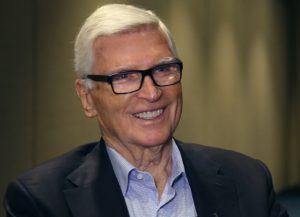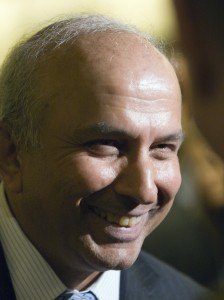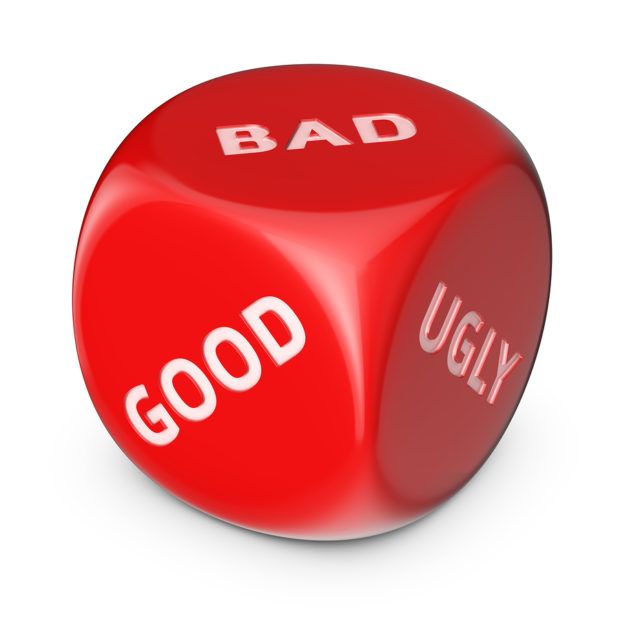FROM THE ARCHIVES: A VINTAGE CARRIER MANAGEMENT ARTICLE FROM 2016
Gone are the days when an interest in Italian vineyards might have been one of the deal drivers sparking an insurance merger or acquisition, according to a veteran reinsurance industry executive.
But even though insurance and reinsurance leaders these days deliver long lists of seemingly more compelling and logical reasons for participating in M&A than one that might have factored into a reinsurance deal 20 years ago, most industry deals destroy value, said John Berger, chairman and chief executive officer of Third Point Re.

Speaking at the Seventh Annual Insurance M&A Symposium produced by S&P Global Market Intelligence last week, Berger offered a somewhat higher estimate of insurance deals that either destroy value or don’t add value than is typically cited—80 percent by Berger’s assessment. The reinsurance executive, who has more than 30 years in the business, also revealed entertaining “inside baseball” type details on historical deals as he categorized them in three buckets: Good, Bad and Ugly (taking his inspiration from the 1966 spaghetti Western of the same title) during his presentation.
Berger started off by simply noting that the insurance industry has been consolidating for more than 30 years. “This is nothing new,” he said, paying particular attention to deals in the reinsurance sector where the number of consolidating companies reporting underwriting results to the Reinsurance Association of America has dwindled from 119 in 1980 down to just 26 in 2015.
The 1980 RAA roster included Constitution Re, which was bought by EXOR (from Xerox in 1995). “They kept it for three years, sold it to Gerling and doubled their money,” said Berger, offering the first of many insights into long-forgotten deals that reshaped the industry.
Gerling eventually went out of business, he said. And in one of the most widely reported deals in recent history, EXOR would ultimately get back into the reinsurance game with the $6.9 billion purchase of PartnerRe in a deal that closed in March last year. (Editor’s Note: EXOR was the winner in a four-month bidding war with AXIS Capital, which had originally agreed to scoop up PartnerRe.)
The 1990 RAA roster of 71 companies included: American Re, which became part of Munich Re (in 1996); NAC Re, which was bought by XL (in 1999); and Unione Italiana Re, which went to Swiss Re.
“The interesting gossip on that was that Swiss Re bought Unione in Italy because Unione had really good vineyards,” said Berger. Officially, Swiss Re said it agreed to buy Unione Italiana di Riassicurazione SpA for roughly 500 million Swiss francs ($380.1 million at the time) to materially expand its reinsurance presence in the Italian market, according to a Dec. 10, 1999 Wall Street Journal report.
Munich Re’s deal for American Re would make it onto Berger’s “bad” deal list, along with GE’s deal for Employers Reinsurance Corporation and Berkshire Hathaway’s deal for Gen Re. “Ultimately those companies were bankrupt. They had adverse development that was greater than their surplus,” Berger reported.
A common deal driver that persists to this day—”bigger is better”—was the prevailing view that set those three in motion. “It was a time when truly you had to be big. You had to be dominant,” Berger said.
“Munich Re paid four-times book for American Re. It turns out they paid an infinite amount because AmRe was bankrupt,” Berger opined.
Why Are Such Deals Just “Bad” and Not “Ugly”?

“Big, strong parents could weather the bad development that came out” of those deals, Berger said.
The deal that brought NAC Re to XL for $1 billion is one that would find its way onto Berger’s “ugly” list, however. Uglier still was one in which GE Capital’s ERC bought Eagle Star Reinsurance in London in 1998, he said, continuing a walk through the history of insurance industry deal-making. “If you randomly asked any taxicab driver in London about Eagle Star Re, he would have told you it was a terrible company. They bought it with no due diligence [and] paid a lot of money for it,” Berger said, suggesting that GE was buying companies as often as businessmen changed shirts at the time.
Another ugly deal saw The St. Paul Cos. buy U.K. broker Minet in the late 1980s. A decade later, when Berger was running F&G Re, which was acquired by St. Paul as part of its deal for U.S. F&G, he would be in the position to ask members of the St Paul management team about the rationale behind the money-losing Minet deal.
“We call it our Snapple,” they responded, dismissing the mistake, reported Berger, noting that the executives were alluding to an infamous failed deal in which Quaker Oats had bought beverage maker Snapple for over $1 billion, only to wind up selling Snapple two years later for $300 million.
St. Paul “ended up paying Aon to take Minet off their hands,” Berger said, slightly exaggerating the degree of ugliness. Officially, a media statement at the time said that “specific terms of the transaction are not deemed to be material to either party and were not disclosed,” and insurance news reports cited sources indicating the price Aon paid was between $50 million and $100 million, representing 20-40 percent of Minet’s estimated revenue.
Deal-Making Superstars
Berger’s keynote address comes at a time when deal volume has subsided in the insurance industry from last year’s record. Shawn Ryan, director of the Knowledge Center of S&P Global Market Intelligence, led off the session noting that insurance deals in North America (pending and completed for underwriters and brokers) dropped from 99 deals valued at over $150 billion last year to 52 so far this year valued at just $5.5 billion.
“Last year was a banner year,” said Berger, noting that bankers he met with a day earlier had observed that “any quarter last year would have been a good year.”
“This year’s a little bit more quiet. But over time, consolidation continues to happen and will continue to happen,” Berger said, turning his attention to broker deals.
In 1989, the top four—Marsh & McLennan, Alexander & Alexander, Sedgwick Group and Johnson & Higgins—represented 62 percent of total industry broker revenue; in 2015, the top four—now Marsh, Aon, Willis Towers Watson and Arthur J. Gallagher—make up about 75 percent (with A&A going to Aon, and J&H and Sedgwick both swallowed up by Marsh in the late 1990s).
Berger also noted a trend of private equity buying into distribution, showing that eight of the top brokers are owned by private equity on a list of top 20 broker names. “We all know that private equity isn’t there for the long haul,” he said, giving a specific reason that consolidation will continue.
Moving on to distinguish the deals and deal-makers that have created value from those which have not, Berger identified only five “good” acquirers—four on the broker side: Aon, AmWINS, Gallagher and Brown & Brown. But distribution wasn’t the common theme of the group that Berger called out, also including Fairfax Financial Holdings on the list as the lone “good” entry on the underwriting side. Instead, he said the five companies “all have visionary leaders,” going on to describe the deal-making skills of Aon’s former chairman Patrick Ryan and Fairfax’s Prem Watsa in some detail.
“They had a vision they’ve executed. The number of companies that these five have bought is in the hundreds.”‘
Examining just the reinsurance side of Ryan’s deals, Berger identified more than a dozen deals that have shaped Aon Benfield and recalled that the journey started with a partnership between Michael O’Halleran and Ryan in 1987.
Disclosing that he had shared some details of his presentation with the 79-year-old Ryan during a recent chance encounter, Berger offered Ryan’s memory of how he and O’Halleran built Aon Benfield into the reinsurance brokerage giant for which O’Halleran serves as executive chair today.

Patrick Ryan
Chair & CEO
Ryan Specialty Group
Related article available on Insurance Journal: “Patrick Ryan on Today’s E&S Business and Using Aon Experience to Build RSG.
Reporting another facet of the success of the Aon deals, this time sharing an insight from former Aon investment banker Rob Bredahl (now chief operating officer of Third Point Re), Berger said Bredahl believes Ryan’s decision to turn the operation over to Greg Case, Aon’s current CEO in 2005, was critical to the success of the buildout. According to Berger, Bredahl revealed that each company on the Aon acquisition roster had its own compensation plan and legacy IT system, which Case, former head of the Financial Services Practice at McKinsey & Company, set out to unify.
“Pat Ryan had a vision of consolidation before anybody else did. And on the retail side, he’s done hundreds of transactions,” Berger said. Case’s execution in putting everything together was the final piece of the success formula, he suggested.
Turning to Fairfax, a company whose name reflects its intention to make “fair and friendly acquisitions” in its name, Berger went on to list nearly 30 acquisitions done since the mid-1980s.
“It’s been an acquisition machine,” said Berger, noting that a personnel acquisition by Fairfax Founder Prem Watsa—snagging Andrew Barnard, a former chief underwriting officer for Transatlantic Re—gave the visionary Watsa the “execution guy” on most of these deals. (Barnard is chairman of Fairfax’s Odyssey Re reinsurance business today in addition to being chief operating officer of Fairfax Insurance Group.)

Fairfax Financial Chairman and CEO
(AP Photo/The Canadian Press, Frank Gunn)
Execution was particularly tough in the late 1990s, when Watsa paid below book value for notable names like Skandia America, Sphere Drake, Crum & Forster and TIG. “As it turns out, he overpaid. Basically, those companies were bankrupt,” noted Berger. “This isn’t for the faint-hearted, [but Watsa] came through in spades,” he said. “He’s in Poland, Malaysia, the Ukraine [and] has really turned Fairfax into a global powerhouse,” Berger said, reviewing deals in the last decade.
Like Fairfax’s late-90s deals, three of four deals that Berger put on his “good” list were acquisitions of companies with problems that were solved or turned around: ACE’s deal to buy INA; Validus buying Talbot Holdings and AXA buying Equitable. While the last deal was in the life insurance industry rather than P/C, Berger put it on his list to describe an unexpected gem hidden in the Equitable package, which AXA bought at a time when trouble real estate investment losses and problems with GICs (guaranteed investment contracts) had Equitable “on the ropes.”
“AXA didn’t even know that Equitable owned DLJ. They were buying the life insurance company. A few year’s later they sold DLJ to Credit Suisse for nearly $12 billion…So they bought the whole thing for a billion and sold a small part for a lot more than that,” Berger said, recounting the success story.
Lemmings and Deal Drivers
While Berger had just a handful of success stories to share, compared to a long list of failed deals, deal-making in the industry persists, he noted, first comparing would-be deal-makers to lemmings who follow each other off a cliff. “They believe they’ll take off up into the sky instead of falling into the ocean.”
“Eighty percent aren’t worth doing, [but] you convince yourself you’re going to be in the 20 percent that work,” he said.
Another common belief that drives deals is that “if you are not a hunter, you’re the hunted,” Berger said. The combination of eternal optimism and the desire to be big drives most deals, he said, going on to list nearly two dozen other reasons, including this conventional wisdom:
- You have to grow.
- You have to be a minimum size to survive.
- You need to be in both insurance and reinsurance.
- Most cedents only want a few big reinsurers on their panels.
- Deals promote expense savings, which are the only means to profit in a soft market.
Market-specific factors existing today include excess capital, oversupply, declining demand (bigger insurers buy less reinsurance) and a “brutally competitive soft market” that isn’t likely to change.
“I don’t think there’s a catastrophe big enough…to change the market,” he said, noting that there is so much capital waiting to get in.
At no point during the talk did Berger say whether Third Point Re might engage in deal-making as a buyer or a seller. But as he went through his list, he did deliver two specific reasons for acquisitions of other reinsurers—Platinum Underwriters Holdings, Montpelier and PartnerRe. “Everyone is for sale at the right price,” and “management and boards give up,” he said.
At Platinum, a casualty reinsurer created from the St. Paul Re book, management was doing a good job with strategies like shrinking business and buying back stock. But they “hit a point where it couldn’t get any smaller and be a viable company,” Berger reported, giving his take on the motivation behind the $1.9 billion sale to RenaissanceRe.
Montpelier’s sale to Endurance was set in motion by the board, deciding independent of the management team, that the company could not continue on its own, Berger reported.
 The latest deal, which has Tokyo-based SOMPO Holdings Inc. now agreeing to buy Bermuda-based insurer Endurance for about $6.3 billion, falls into a “wildcard” category for Berger. “What are their long-term aspirations? I don’t know. Nobody knows,” he said, referring generally to buyers from Japan and China.
The latest deal, which has Tokyo-based SOMPO Holdings Inc. now agreeing to buy Bermuda-based insurer Endurance for about $6.3 billion, falls into a “wildcard” category for Berger. “What are their long-term aspirations? I don’t know. Nobody knows,” he said, referring generally to buyers from Japan and China.
Giving an overriding reason for insurance and reinsurance deals, in general, Berger said, “Most importantly, senior management can make a lot of money,” noting that senior managers own “more stock than ever before” as companies move to align their interests with shareholders.
Finally, Berger compared insurance M&A to marriages. “Fifty percent of marriages end in divorce…Just like marriages, in M&A, the 20 percent that work inspires us all,” he said.
Robert Glanville, a director for mortgage insurer Essent Group and an advisor to private equity and VC-funded financial services businesses, had a different view of deal drivers as well. “Under the radar,” he believes that management teams are focusing on where they add value and working to build on that. “Where the value-add is in the insurance ecosystem from front-end to back-end is substantially changing,” he said, following a separate presentation by a chief information officer on IT opportunities emerging from M&A. “As boards for balance sheet businesses look around at what they do—what their franchise value is—[the answers] are starting to direct M&A activity,” he said.
“M&A activity is a tool to support and understand the strategic direction of balance sheet businesses,” like insurance companies, said Glanville, who was formerly a co-founder of Pine Brook and a senior vice president at Arch Capital Group. “What is it your firm does that you get paid for? Is it particularly flexible underwriting capabilities, specialty underwriting capabilities, businesses that require a lot of data?…Special claims capabilities?”
After asking what it is that drives their businesses, management teams are wondering how to get more of that expertise, he suggested. “M&A is a tool. It’s not a strategy,” he concluded.
Hendrickson said he doesn’t see one underlying theme in 2015 and 2016 deals, although he did say there has been “a rediscovery” of insurance and reinsurance organizations by large family offices (like EXOR), sovereign wealth funds and pension funds as a great place to allocate big chunks of assets. He and other panelists cited a September agreement in which the Canada Pension Plan Investment Board is buying into Ascot Underwriting as an example of the latter.
Why has 2016 been slower than 2015 in terms of deal activity?
“There’s a cadence to M&A,” Hendrickson said, noting that last year’s $29.5 billion ACE-Chubb deal and Mitsui Sumitomo’s $5.3 billion deal for Lloyd’s insurers Amlin were done at “pretty full valuations [which] took a while for the market to absorb.”
“If you’re a seller and you look at those valuations, the bar goes up. If you’re a buyer, it’s [going to take] a pretty unique set of circumstances as a buyer to be able to afford those prices,” he said.





















 Executives on the Move at Liberty Mutual, Cowbell, W. R. Berkley
Executives on the Move at Liberty Mutual, Cowbell, W. R. Berkley  Insurance Costs, Climate Concerns Factor Heavily in U.S. Home Buying Decisions
Insurance Costs, Climate Concerns Factor Heavily in U.S. Home Buying Decisions  California Workers Comp Combined Ratio for 2024 Highest in 20-Plus Years
California Workers Comp Combined Ratio for 2024 Highest in 20-Plus Years  Slideshow: Carrier Management’s 2025 Top Editor’s Picks (Unlocked)
Slideshow: Carrier Management’s 2025 Top Editor’s Picks (Unlocked) 






